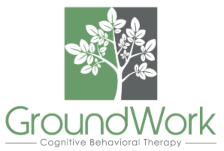Navigating Through Childhood Phobias: A Parent’s Guide
 Childhood brings with it a kaleidoscope of experiences, often colored by joy and wonder. However, for many children, it is also a time rife with anxious moments and, in some cases, significant fears. As parents, it is part of our role to guide our children through these moments, providing the support and tools they need to overcome their anxieties. However, when these fears evolve into phobias, they often necessitate a more targeted approach. This guide is intended to shed light on the prevalence and impact of childhood phobias, understand their development, and offer strategies for supportive parenting, including evidence-based therapy approaches.
Childhood brings with it a kaleidoscope of experiences, often colored by joy and wonder. However, for many children, it is also a time rife with anxious moments and, in some cases, significant fears. As parents, it is part of our role to guide our children through these moments, providing the support and tools they need to overcome their anxieties. However, when these fears evolve into phobias, they often necessitate a more targeted approach. This guide is intended to shed light on the prevalence and impact of childhood phobias, understand their development, and offer strategies for supportive parenting, including evidence-based therapy approaches.
Recognizing the Importance of Addressing Childhood Phobias Promptly
For many parents, the concept of childhood phobias might seem like an over-reaction, a temporary fear that the child will outgrow. However, these phobias can be intensely distressing and interfere with a child’s daily life. The American Psychiatric Association classifies phobias as excessive or irrational fears that provoke intense and problematic physiological responses, such as panic attacks or a need to escape a situation. When children experience these fears, it can impact their social, academic, and even physical development.
The Role of Parents in Supporting Children
As a parent, your understanding and non-judgmental support are crucial in the face of your child’s phobias. It’s important to create a safe environment for your child to express their feelings and fears. This goes beyond just offering comfort; it requires an active role in helping your child feel capable of confronting and overcoming their phobias. Recognizing the significance of your role is the first step in the journey to helping your child conquer their fears.
Common Childhood Phobias: Identifying the Culprit
The fears that materialize in childhood are diverse and multifaceted. Some are common, like a fear of the dark, while others may be more specific and unusual, like a fear of buttons. Despite their variety, these phobias share one common characteristic: they bring about overwhelming feelings of terror.
Common Phobias Include:
– Fear of vomiting (emetophobia)
– Fear of dogs
– Fear of bugs
– Fear of storms
– Fear of needles
– Fear of the dark
– Fear of heights
– Fear of confined spaces
Understanding the Development of Childhood Phobias
Childhood phobias typically develop between the ages of 7 and 11. Understanding the specific phobia your child is dealing with is essential in tailoring your approach to help them. These fears are normal to a certain extent, as they can be protective mechanisms; however, when they become excessive and limit a child’s ability to function normally, then intervention is needed.
Examining the Impact on Daily Functioning
To many, these fears can seem trivial or inconsequential. Yet, they can significantly impact a child’s day-to-day life. Phobias can affect a child’s ability to sleep, concentrate in school, or even enjoy the simple pleasures of childhood. They can also lead to avoidance behaviors, where a child will go to great lengths to escape situations associated with their fears.
Understanding Phobia Development in Children
Phobias don’t arise out of thin air. They often have triggers and causes that can be identified and, in turn, addressed. Whether it’s a genetic predisposition, a learned response, or a traumatic experience, understanding the roots of a child’s fears is a crucial step in helping them manage and, ideally, eliminate these phobias.
Causes and Triggers
Exploring these causes should be done gently and gradually. It may be that a particular incident, even seemingly benign, has sparked the fear. By identifying these triggers without judgment, you can begin the work of unraveling the phobia’s grip on your child’s mind.
Supporting Your Child Through their Phobia Journey
A parent’s support can make a world of difference to a child grappling with a phobia. Commencing a dialogue with your child about their fears, infusing hope for their recovery, and considering professional help are the pivotal points in aiding your child’s path to healing.
Communication and Empathy
Open, honest communication is essential. Understanding the fear from your child’s perspective, even if it seems irrational, is key. Your empathy will help your child feel validated and understood, forming the bedrock of their confidence to tackle their phobia.
Instilling Hope for Effective Treatment
It is imperative that you instill the belief that their fears can be conquered. Phobias may be formidable, but they are not insurmountable, especially with the promise of effective, professional treatment.
Seeking Specialists in Evidence-Based Care
Exposure therapy, a form of Cognitive Behavioral Therapy (CBT), is often the first-line treatment for phobias. Professional therapists who specialize in this area can guide your child through safely confronting their fears, gradually and systematically. Seek out these professionals – they can be the lifeline your child needs to step into a world free of fear.
Exploring Evidence-Based Therapy Approaches
Exposure therapy is a powerful tool that gradually exposes the child to the feared object or situation in a controlled setting. As the child becomes more and more accustomed to the phobia, it loses its grip. This section delves into the intricacies of this approach and how it can be integrated into a child’s life beyond the therapist’s office.
Introduction to Exposure Therapy
Exposure therapy introduces the fear in a way that is manageable for the child, often starting with imagined scenarios and progressing to real-life experiences. This systematic approach allows the child to become desensitized to the fear over time.
Benefits and Effectiveness
The results of exposure therapy can be transformative. It not only helps the child confront their fear but also builds their confidence and resilience. The evidence of its success is overwhelming, with countless children finding relief through this method.
Transitioning Therapy to the Home Environment: Homework Assignments
The work doesn’t stop at the therapist’s door. Homework assignments are a key part of exposure therapy, as they allow the child to practice what they’ve learned in their day-to-day life. These assignments, when approached positively and progressively, are vital for reinforcing the progress made in therapy.
Conclusion: Addressing Childhood Phobias & Finding Help
As a parent, addressing your child’s phobias can be a daunting prospect. But with understanding, patience, and the right guidance, it is entirely possible. Embracing the role of a supportive, encouraging advocate for your child can set them on a path to a life unencumbered by their fears. Remember, your child is not alone in this—the right therapy and your unwavering support can make phobias little more than a distant memory of their childhood. Let’s help our children face their fears and conquer them, one step at a time.
At GroundWork Cognitive Behavioral Therapy in Orlando we’re here to help children and families overcome fears, phobias, and anxiety through evidence-based treatments including exposure therapy.

